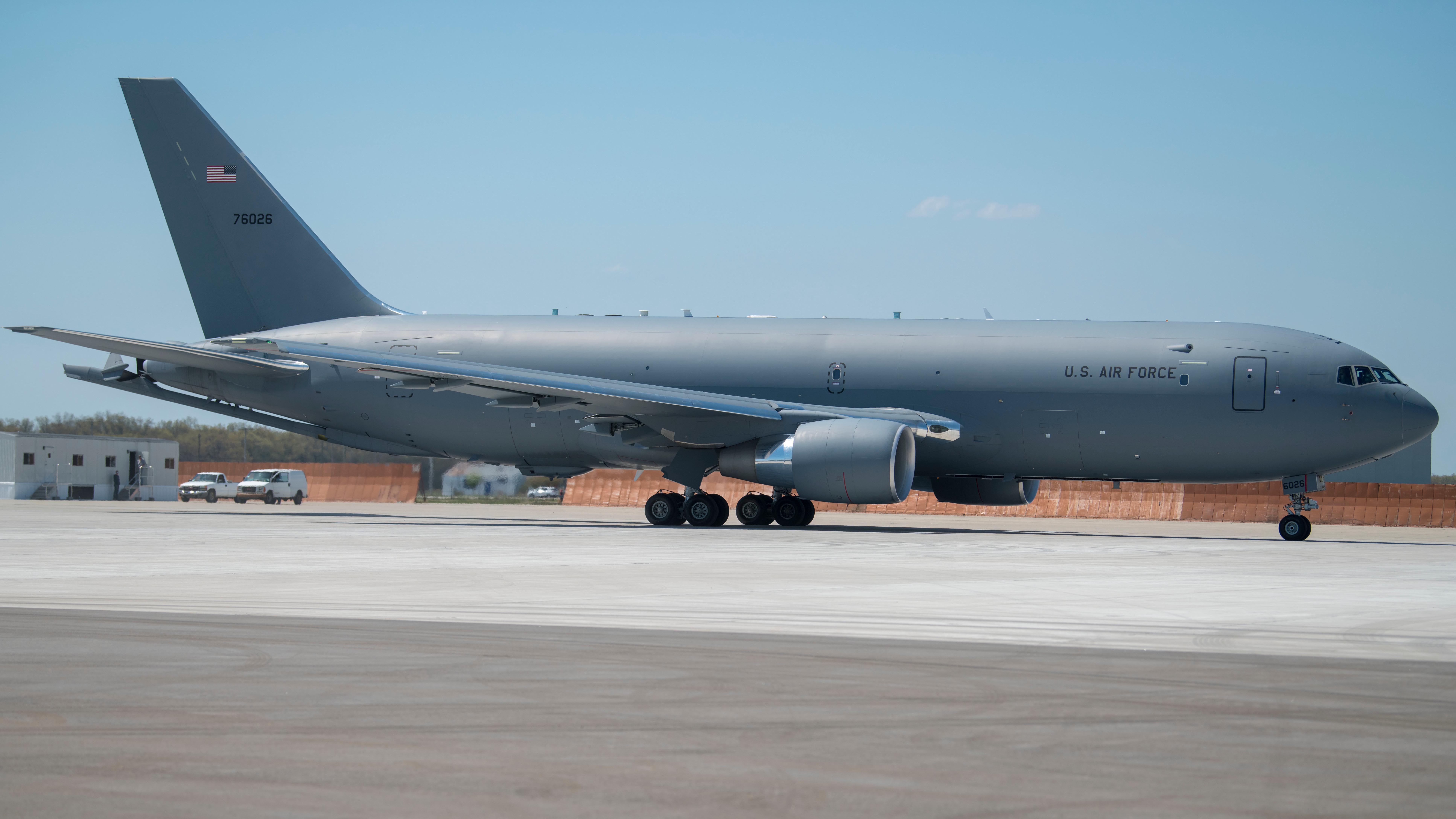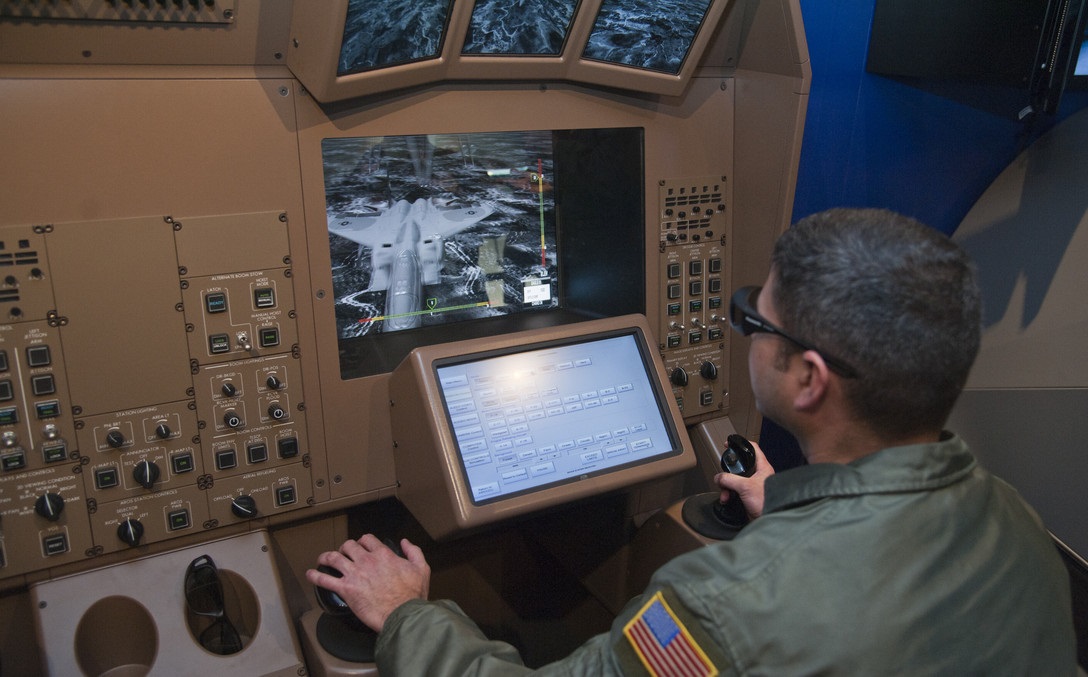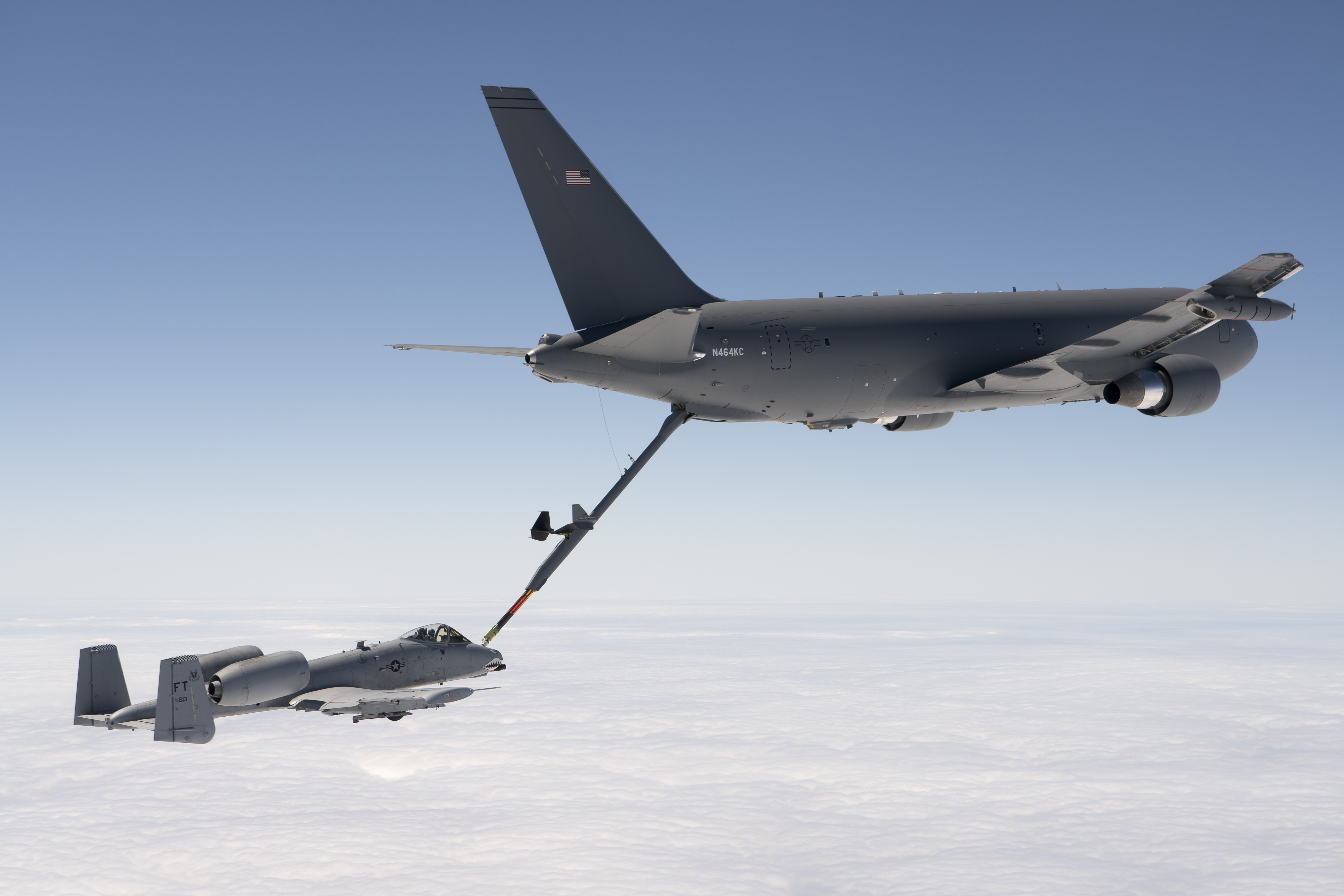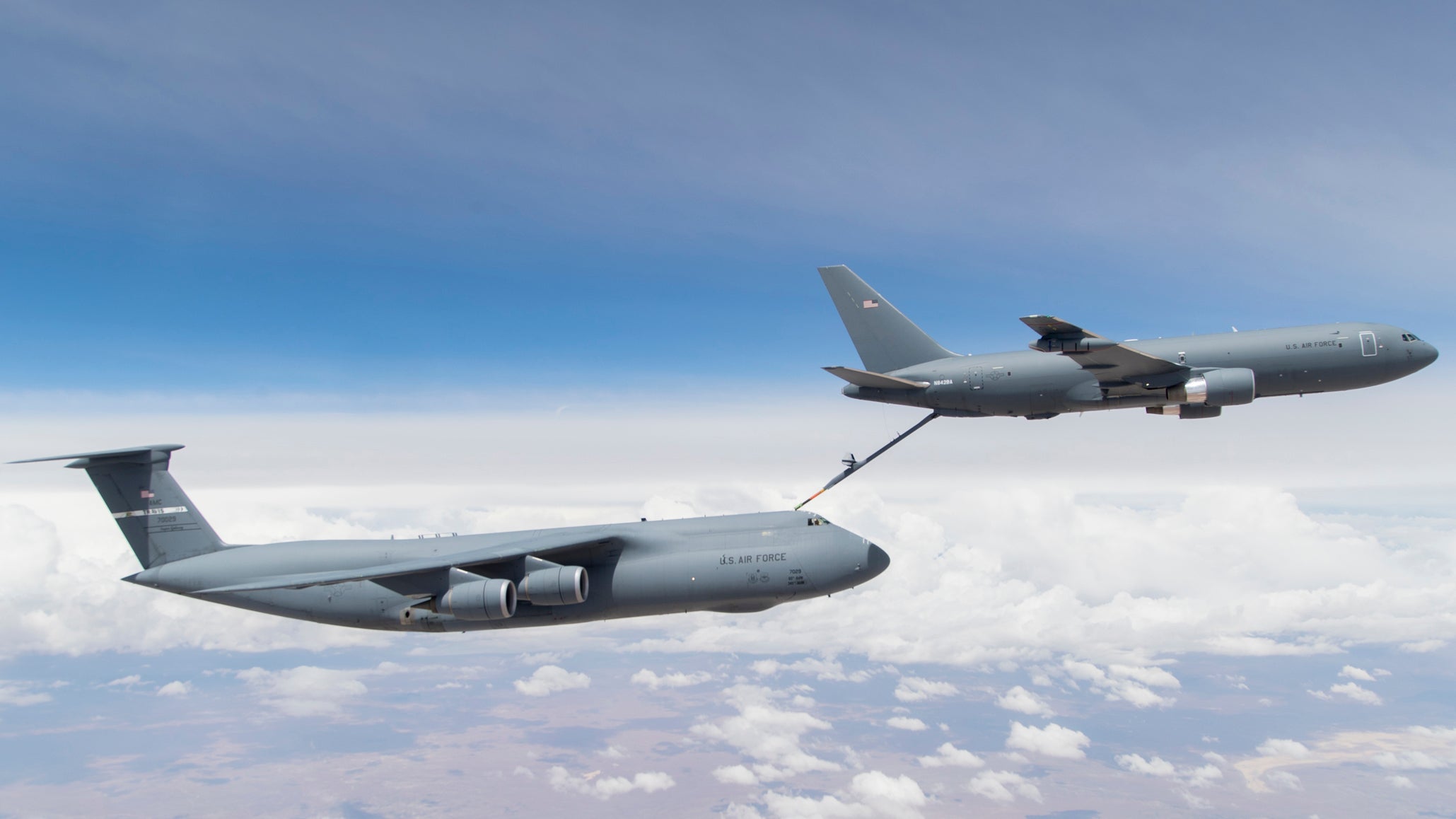A new report says that boom operators aboard the U.S. Air Force’s troubled KC-46A Pegasus aerial refueling tankers are using shadows cast on the receiver aircraft to guide the boom into the receptacle. That means that, on a cloudy day, boom operators sometimes have to rely simply on past experience in the role to achieve a successful ‘hookup’ with a thirsty aircraft.
These details emerged after Air Force Magazine’s Pentagon editor, Brian Everstine, joined a refueling flight out of Oscoda-Wurtsmith Airport, Michigan, on May 25. The base was being used for training as part of Air Mobility Command’s flagship Mobility Guardian 2021 exercise, which featured a single KC-46A. This was the first time a member of an independent media outlet had ever flown onboard an Air Force Pegasus tanker.

In the past, The War Zone has looked in detail at the problems relating to the KC-46A’s Remote Vision System (RVS), which the boom operators use to connect the boom with receiving aircraft. It’s a critical system on the Pegasus and fundamental to its ability to operate as a tanker for receptacle-equipped aircraft from the U.S. military and its allies.
It’s also a new kind of technology for Air Force refueling aircraft. The service’s previous tankers have all had position for the boom operator to physically lie in at in the rear fuselage, from where could watch the boom directly with their own eyes and guide it into the receiving aircraft. The KC-46, in contrast, has the boom operator seated in the aircraft’s main cabin where they perform their task via the RVS. Since this is a hybrid 2D/3D system, the operators wear special glasses that are, at least in principle, supposed to provide enhanced depth perception while viewing through a flatscreen.
Everstine got the chance to see the RVS in action, as the KC-46, deployed from McConnell Air Force Base, Kansas, refueled F-16 fighter jets from the Ohio National Guard.
What he described about the system is worth repeating in full:
“The camera feed does not accurately show the end of the boom — there’s about another foot and a half beyond what is visible on the screen, so boom operators use the shadows to gauge where the tip is before connecting to the receptacle. If there’s no shadow, on a cloudy day, for example, the operator has to rely on experience, rather than technology, to make the connection.”
Basically, the deficiencies with the RVS sound a lot worse than had been previously reported.
Earlier reports stressed that the RVS problems were centered around the issue of depth perception, something that Everstine also noted on his flight:
“Even with the 3D goggles, depth perception is difficult. Moving the refueling boom around the F-16’s canopy to then line up with the receptacle, flying at 290 knots, is a delicate process. While wearing the goggles, the center of the screen is sharp, but when you look to the edge of the screen, it gets blurry and disorienting.”

Previous accounts had pointed to the problems caused by shadows, glare, and other environmental factors making it hard for the boom operator to have a good sense of what’s going on. In 2019, for example, Bloomberg stated that “shadows or the glare of the sun can hamper the view in rare instances, possibly resulting in scraping the other plane or difficulties in performing a refueling, according to the Air Force.”
In the same year, an Air Force official explained to Defense News that “There is a slight difference between the motion viewed in the RVS versus what is actually occurring in the physical world.” That now seems as if it might have been a serious understatement.
At one point in the Mobiliy Guardian maneuvers, for instance, the weather during the sortie prevented a C-5 Galaxy strategic transport aircraft from taking on fuel, when “direct-sunlight washout” meant the RVS screen was no longer useable.
In the Pentagon’s own analysis on the KC-46’s progress, as part of the Director Operational Test and Evaluation Annual (DOT&E) reports, the issue has only ever been described in vague terms, as a “lack of visual acuity.”
However, this latest report from Air Force Magazine strongly suggests that the RVS has a fundamental problem to begin with and that the shadows, in particular, have been used by boom operators as a workaround. Furthermore, it seems to be apparent that the effects of shadows can be both a solution and a problem, depending on the context.
Amid all the other difficulties that have faced the KC-46, the RVS has surely been the most enduring one. It’s for this reason that work is now underway on an ‘RVS 2.0’ that will provide all-new equipment, including a laser ranger to measure the distance between tanker and receiver, color rather than black and white screens, plus augmented reality for the boom operator.
All in all, the RVS 2.0 advances are expected to fix the current problems of depth perception and the problem of visually tracking the boom itself.

Everstine confirmed that the RVS 2.0 is now undergoing its preliminary design review, and that Air Mobility Command is “cautiously optimistic” about the outcome.
Under a 2020 agreement with Boeing, the manufacturer is covering all the costs of developing and installing the RVS 2.0, but it won’t actually begin to be fitted to new-build aircraft until 2023, while retrofitting of previously delivered aircraft will begin a year after that. As well as the new RVS, the fixes provide a modified boom to address the aforementioned stiffness problem.
During the same Air Mobility Command exercise, A-10 attack jets couldn’t be refueled at all. The KC-46 is still awaiting clearance to provide this platform with fuel, due to a separate and long-running “stiff boom” problem, which runs the risk of damaging the receiving aircraft.

Just today, it emerged that the ongoing effort to redesign the boom, costing $100 million, could likely have been avoided had the Air Force taken note of problems that had emerged much earlier in the program.
Alarmingly, a technology readiness assessment (TRA) — which assesses the maturity of critical hardware and software technologies — also revealed that Boeing engineers used no new or novel technology in the design of the boom because the design was “based on that of the well-proven KC-10 [refueling boom] and the control laws [were] based on the Italian KC-767A and Japanese KC-767J control laws.”
“We reviewed the preliminary design review documentation and found that it showed a refueling boom design that differed significantly from the proposed design that the independent review team documented in the TRA report,” the Pentagon’s Inspector General states in a recent report into the KC-46 program.
Meanwhile, with RVS 2.0 still some way off, Boeing has developed an interim ‘RVS 1.5’ to enhance image quality on the boom operator’s screens, but the aircraft used in Mobility Guardian 2021 had the original system installed. Meanwhile, the 1.5 version doesn’t do anything to address blinds spots or other factors.
As we have pointed out before, even having aircraft on the ramp fully modified with the definitive RVS 2.0 doesn’t mean that they will immediately be declared fully operational and ready for combat missions. After all, the relevant personnel will have to be trained to use it.
Until that happens, however, the KC-46’s utility will inevitably continue to be limited.
Contact the author: thomas@thedrive.com
